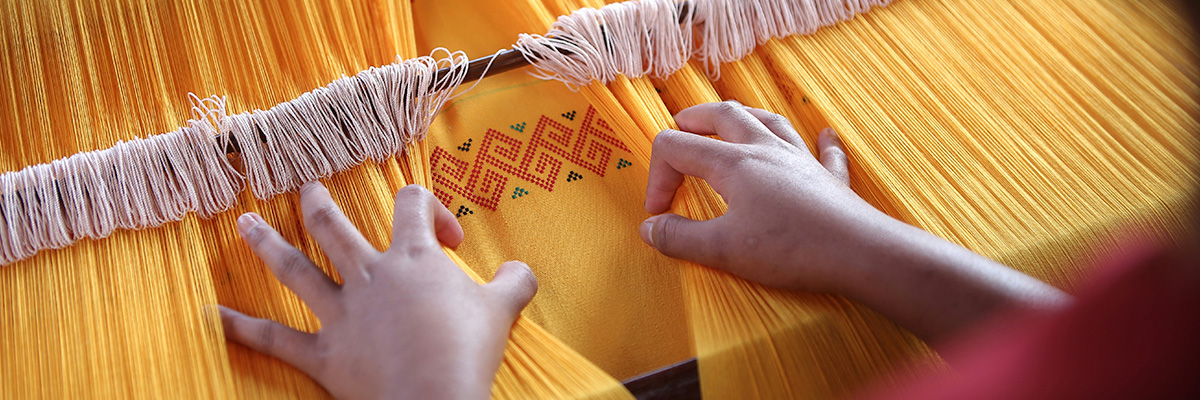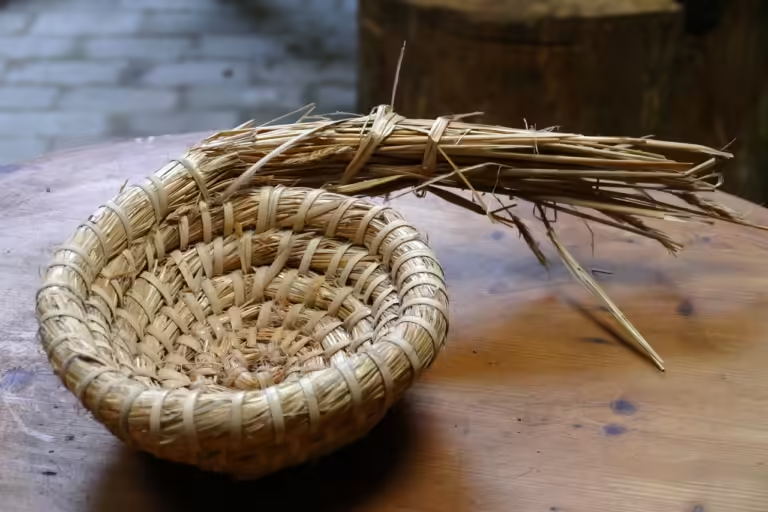Weaving Machinery: Everything You Need to Know
Weaving machinery serves as the backbone of the textile industry, playing a crucial role in the creation of various fabrics by interlacing different sets of yarns at right angles. This intricate process yields a wide range of textiles, from delicate silks to durable denim, showcasing the versatility of weaving machinery. Not only does this equipment streamline the weaving process, but it also enhances productivity, enabling mass production of fabrics in a cost-effective manner.
Table of Contents

History of Weaving Machinery
The evolution of weaving machinery is a testament to human ingenuity and the pursuit of efficiency. Originally, weaving was a manual process carried out using handlooms. However, the Industrial Revolution brought about a significant shift with the introduction of power looms, mechanizing the weaving process. Technological advancements over the years have led to the development of more sophisticated machines, featuring computerized controls and automation, thereby revolutionizing the textile industry.
The initial phase of weaving involved simple handlooms that artisans operated manually. These handlooms were ideal for creating intricate, bespoke designs but required considerable time and effort. With the advent of the Industrial Revolution, the textile industry saw the introduction of power looms, which were capable of producing fabric at unprecedented speeds. These machines were driven by steam or water power, significantly increasing the volume of textile production.
Over time, shuttle looms became prevalent, known for their ability to produce tightly woven fabrics with selvedge edges. However, they had limitations in speed and efficiency. The mid-20th century saw the advent of shuttleless looms, which offered higher speed and reduced downtime. These looms utilized alternative methods to transfer the weft thread, such as air jets, water jets, or rapiers, streamlining the weaving process even further.
Modern weaving machinery has embraced digital technology, incorporating computerized controls and automation. These advancements have not only increased efficiency but also allowed for greater precision and customization. The journey from manual handlooms to today’s advanced machines exemplifies the continuous pursuit of innovation in the textile industry.
- Shuttleless looms: Offer higher speed and efficiency in weaving process
- Handlooms: Ideal for artisanal and bespoke creations due to manual operation
- Power looms: Designed for high-speed production of standard fabrics
- Shuttle looms: Known for producing tightly woven, selvedge edges
Components of Weaving Machinery
Weaving machinery consists of several essential components, each serving a crucial role in the weaving process. The warp beam holds the warp threads, while the harnesses lift and lower these threads to create a path for the weft thread. The reed, resembling a comb, helps push the weft thread into place, and the shuttle carries it through the warp. Understanding the functions of these components is key to mastering the art of weaving.
The warp beam is fundamental to the weaving process, as it holds the lengthwise threads, known as warp threads, under tension. These threads are crucial as they provide the foundation for the fabric.
Harnesses are frames that contain heddles, which are used to lift and lower the warp threads. By creating a shed, which is the space between raised and lowered threads, the harnesses allow the weft thread to pass through.
The reed, which looks like a comb, is used to push the weft thread into place after it has been carried through the warp by the shuttle. This action ensures that the fabric is woven tightly and evenly.
The shuttle is a device that carries the weft thread back and forth across the warp threads. In shuttleless looms, this function may be performed by air, water, or a mechanical device, depending on the type of loom.
- Shuttle: Carries weft thread through the warp
- Warp beam: Holds the lengthwise or warp threads
- Harnesses: Lift and lower warp threads to create space for weft thread
- Reed: Pushes weft thread into place
How Does Weaving Machinery Work?
Operating a weaving machine involves a series of intricate steps. The process begins with winding the warp threads onto the warp beam, which then pass through the harnesses to create a shed for the weft thread. The shuttle, carrying the weft thread, moves through the shed, after which the reed pushes the weft thread into place, resulting in the creation of woven fabric.
The initial step in weaving involves preparing the warp beam by winding warp threads onto it. This setup is crucial as it maintains the necessary tension throughout the weaving process.
Once the warp threads are secured, they pass through the harnesses. Manipulating the harnesses creates a shed, an opening through which the weft thread is inserted. This shed is essential for the interlacing of warp and weft threads.
The shuttle, which carries the weft thread, traverses through the shed. In shuttleless looms, alternative methods such as air jets, water jets, or rapiers are used to propel the weft thread across the warp threads.
After the shuttle or equivalent mechanism passes through, the reed pushes the weft thread into place, ensuring the fabric is tightly woven. This action is repeated continuously to produce the desired length of fabric.
- Reed pushes weft thread into place
- Winding warp threads onto warp beam
- Harnesses create a shed for the weft thread
- Shuttle carries weft thread through the shed
Common Issues and Troubleshooting
Despite their robust design, weaving machines may encounter various issues such as thread breakage, uneven tension, and mechanical faults. Understanding these common problems and their solutions is essential for ensuring smooth operations. For example, thread breakage can often be resolved by checking the thread path for obstructions or adjusting the tension accordingly.
Thread breakage is a frequent issue in weaving, often caused by obstructions in the thread path or improper tension. Inspecting the thread path and ensuring it is clear of debris can mitigate this issue. Adjusting the tension appropriately can also prevent threads from breaking.
Uneven tension across warp threads can lead to an inconsistent weave. Ensuring that all threads are aligned correctly and adjusting the tension to be uniform can resolve this problem.
Mechanical faults, such as worn-out parts or misaligned components, can disrupt the weaving process. Regular inspections and maintenance can help identify and rectify these issues before they cause significant downtime.
- Thread breakage: Check for obstructions in thread path or adjust tension
- Uneven tension: Ensure proper alignment of threads and adjust tension
- Mechanical faults: Inspect machinery for any malfunctions and address accordingly
Maintenance and Care Tips
Regular maintenance is crucial for the optimal performance and longevity of weaving machinery. This includes routine inspections for wear and tear, timely replacement of worn-out parts, and regular cleaning to remove dust and lint. Proper lubrication of moving parts is also essential to prevent friction and overheating, ensuring smooth operation of the equipment.
Routine inspections should be conducted to identify any signs of wear and tear. This proactive approach allows for timely repairs and replacements, minimizing the risk of unexpected breakdowns.
Replacing worn-out parts promptly is essential to maintain the efficiency and accuracy of the weaving machinery. Delaying replacements can lead to more significant issues and reduced quality of the woven fabric.
Regular cleaning is necessary to remove dust, lint, and other debris that can accumulate on the machinery. This practice helps maintain the machine’s performance and prevents potential blockages or malfunctions.
- Regular inspections for wear and tear
- Timely replacement of worn-out parts
- Cleaning to remove dust and lint
- Proper lubrication of moving parts
Future Trends in Weaving Machinery
The future of weaving machinery is poised to be shaped by technological advancements. Emerging technologies such as artificial intelligence, machine learning, and automation are paving the way for smarter, more efficient machines. These advancements are expected to boost productivity, reduce waste, and facilitate the creation of more intricate and innovative fabrics, ushering in a new era in the textile industry.
Artificial intelligence (AI) is set to revolutionize the textile industry by enabling machines to learn and adapt to various weaving patterns and techniques. This capability will enhance the precision and efficiency of the weaving process.
Machine learning algorithms can be employed to predict and prevent potential issues in weaving machinery, reducing downtime and improving overall productivity. These algorithms analyze data from the machines to identify patterns and anomalies, allowing for preemptive maintenance and troubleshooting.
Automation in weaving machinery will continue to evolve, resulting in fully automated production lines capable of operating with minimal human intervention. This shift will significantly increase production capacity and reduce labor costs.
Sustainability is another trend influencing the future of weaving machinery. Advances in technology will enable the development of eco-friendly machines that minimize waste, use less energy, and produce sustainable fabrics, contributing to a greener textile industry.
Final thoughts…
In conclusion, weaving machinery remains a cornerstone of the textile industry, transforming raw threads into beautiful and functional fabrics. As technology continues to progress, the capabilities of these machines are also evolving, offering endless possibilities in the world of textiles. From the humble handlooms of the past to the sophisticated machines of today, the journey of weaving machinery exemplifies human innovation and the ever-evolving nature of the textile industry.

FAQ
What are some common issues with weaving machinery and how can they be resolved?
Common issues with weaving machinery include thread breakage, uneven tension, and mechanical faults. These can be addressed by checking for obstructions in the thread path, adjusting tension, aligning threads properly, and inspecting machinery for malfunctions.
What is the history of weaving machinery?
The history of weaving machinery showcases the evolution from manual handlooms to mechanized power looms during the Industrial Revolution, leading to the development of sophisticated machines with computerized controls and automation.
What are the types of weaving machinery available?
There are various types of weaving machinery, including handlooms ideal for artisanal designs, power looms for mass production, shuttle looms for tightly woven edges, and shuttleless looms for higher speed and efficiency.
What are the essential components of weaving machinery?
The essential components of weaving machinery include the warp beam, harnesses, reed, and shuttle, each playing a crucial role in holding threads, creating sheds, and pushing the weft thread into place to create woven fabric.


